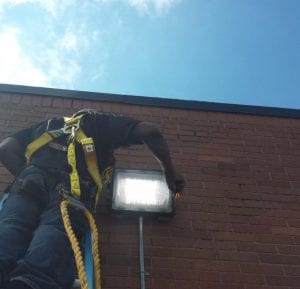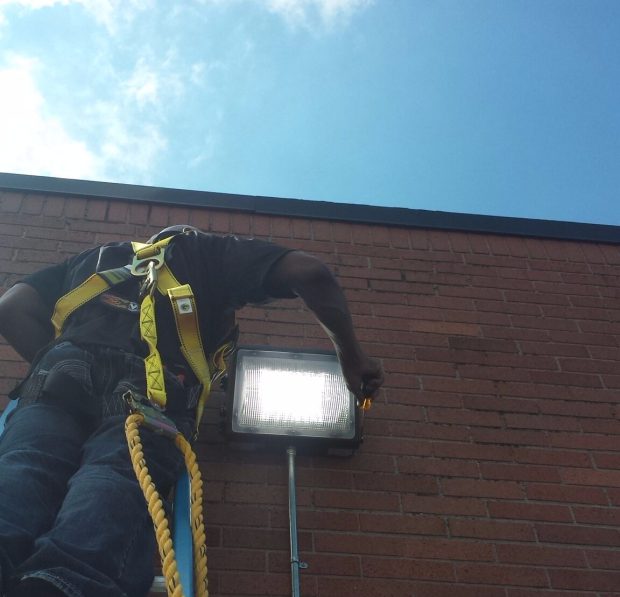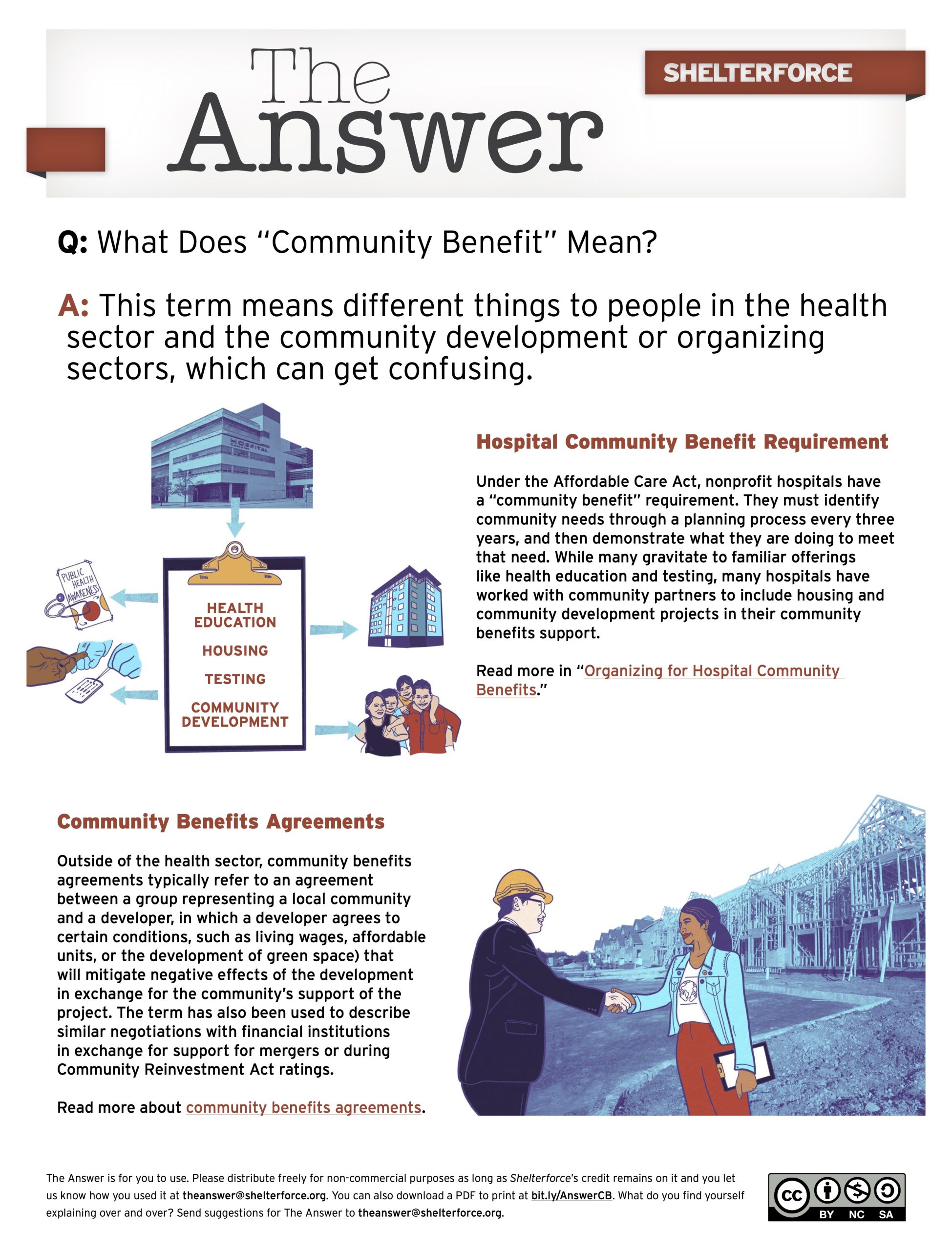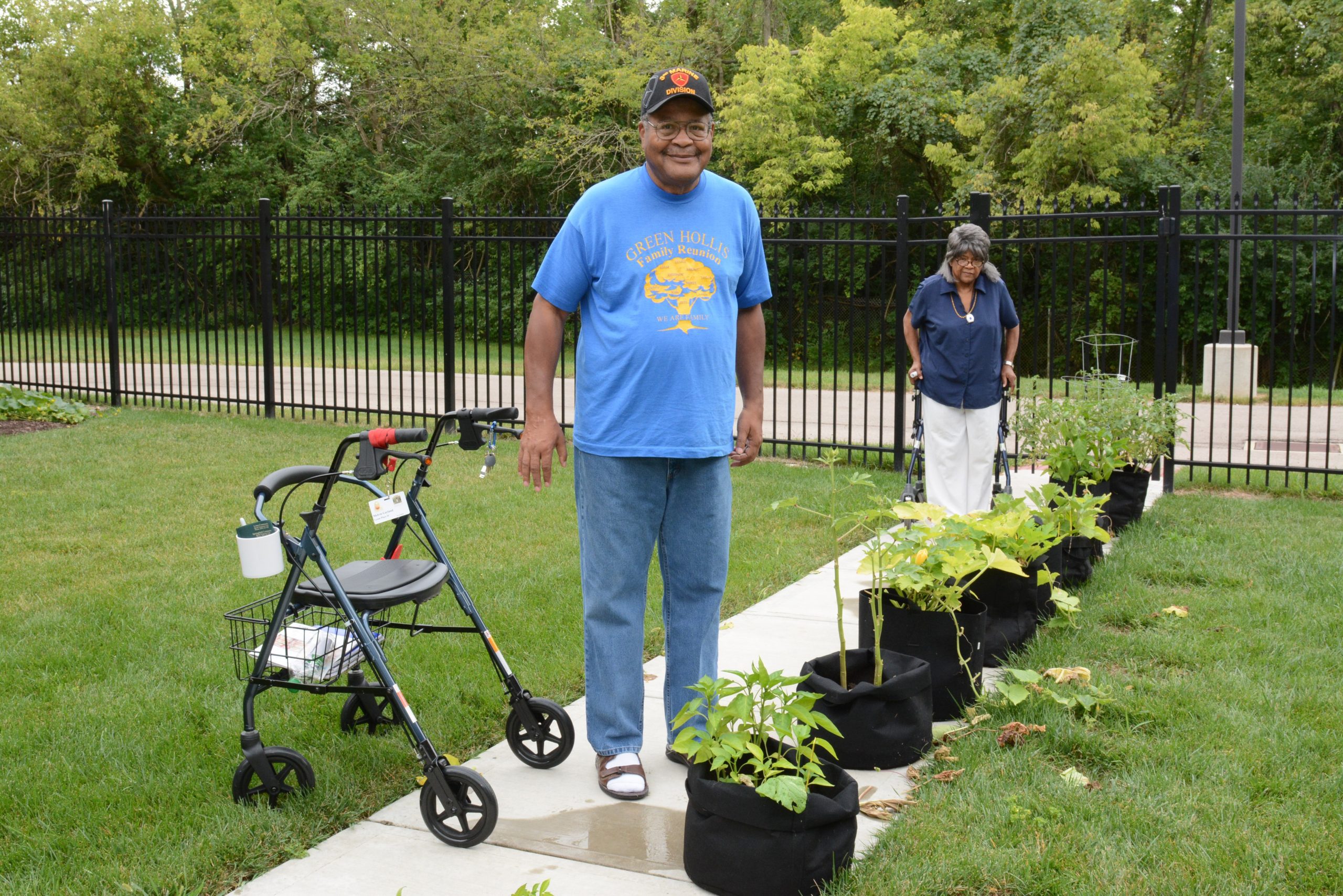
OWN Rochester leverages the community’s resources—the collective purchasing power of anchor institutions, the intellectual and human capacity of residents, and the financial resources of philanthropy—to aggregate institutional demand and provide support to worker-cooperative businesses. Photo courtesy of the Democracy Collaborative
For decades Rochester, New York, was a thriving company town where Kodak dominated economic life. But with the company’s fall into bankruptcy in 2012, residents faced unemployment and population decline, much like many other Rust Belt cities. Unsurprisingly, the economic challenges caused by rapid deindustrialization also led to an increase in poverty—Rochester has the highest rate of extreme poverty of any comparably sized city in the U.S., and more than half of the city’s children are poor. In 2014 when Mayor Lovely Warren was elected to office, she vowed to address the city’s growing poverty and inequality by seeking new models of equitable economic development.
After studying the Evergreen Cooperative Initiative in Cleveland, Ohio, which has created 120 jobs in disinvested neighborhoods by developing social enterprises linked to the supply needs of large institutions, Rochester officials retained the services of The Democracy Collaborative (TDC) to determine if a similar model held promise for their city.
TDC assessed the feasibility of developing a network of for-profit, employee-owned businesses that would be linked to services that are in high demand. For instance, we know that nonprofit hospitals and educational institutions have the ability to leverage their resources to engage in inclusive and local hiring practices, diverse and locally owned purchasing, and place-based investing to build wealth in historically disinvested and marginalized communities. After we identified areas of potential collaboration, TDC worked with city officials to develop an implementation plan.
That work lead to the creation of a nonprofit called OWN Rochester, which the city incubated. OWN Rochester initially helped start worker-cooperative businesses and later spun off as an independent, community-led nonprofit organization. Its charge is to create jobs and build wealth in high-poverty areas of the city by developing, promoting, and supporting for-profit, employee-owned businesses.
OWN Rochester leverages the community’s resources—the collective purchasing power of anchor institutions, the intellectual and human capacity of residents, and the financial resources of philanthropy—to aggregate institutional demand and provide support to the worker-cooperative businesses. The difficulties with fulfilling that mandate are the same faced by any startup. But there are also additional challenges when building up businesses and the workforce in disadvantaged communities where financial resources are not as abundant, and training and wraparound services are often needed.
How did OWN Rochester proceed? It built strategic partnerships with anchor institutions, local government, social service agencies, and other community stakeholders to identify business opportunities and mobilize resources to support the worker cooperatives. OWN Rochester relies on collaborations with local institutions that share the same vision of community economic development, partnerships that include Rochester Regional Health System, the University of Rochester, the local chamber of commerce, local philanthropy, and community organizations.
“In order to be successful we had to make sure we got the institutions on board to do business with our worker cooperatives. The type and extent of the business transaction depends on their needs and demands but the commitment is there,” says Kate Washington, chief executive officer of OWN Rochester.
OWN Rochester has launched two start-up businesses—an LED retrofitting company and a custodial business—that will soon transition to worker cooperatives. The goal is to establish a portfolio of cooperatives over the next few years. The organization will also focus on converting existing businesses into worker cooperatives by targeting owners who are looking to retire or exit the company and willing to sell the business to employees. Recently, OWN Rochester has partnered with a group that works with other businesses to reduce costs through regional procurement. The partnership would channel some orders through OWN Rochester, opening up an extended network of purchasers throughout the region.
Partnering with Anchor Institutions
Forming an anchor collaboration isn’t automatic; there isn’t a recipe for success. It takes effort and time to get institutions to see their common interests and potential alignment. Institutions that work in the same sector may view each other as competitors, such as health care systems that serve similar neighborhoods or patients. However, anchor institutions across different sectors are beginning to realize that they face similar challenges and, by joining forces, are stronger and can accomplish goals that once seemed out of reach.
Newark, New Jersey, is a good example of this. Although it’s the largest city in the state, Newark has high poverty and crime rates. In 2006, Newark launched its strategic plan, OpportunityNewark, to increase the competitiveness of the city, stimulate business development, and connect residents to job opportunities. The plan included market-driven economic development initiatives that could meet the needs and demands of local customers, and strategies to better connect residents to job opportunities by removing barriers to employment, such as training and job-related expenses. Helping to develop the strategic plan were The Newark Alliance, a nonprofit dedicated to the ongoing economic revitalization of Newark, and Initiative for a Competitive Inner City, a nonprofit that drives economic prosperity in America’s inner cities through private sector investment to create jobs, income and wealth for local residents.
RWJBarnabas Health helped shape the strategy and now serves on Mayor Ras J. Baraka’s Newark2020 steering committee, a plan to connect 2,020 unemployed Newark residents to living-wage jobs by 2020. RWJBarnabas Health began intentionally hiring locally in 2016 with the launch of its Hire Newark Bootcamp with the Mayor’s Centers of Hope. One local procurement success was when Newark Beth Israel Medical Center connected with local manufacturer Rock Ya Socks to supply patients’ socks, allowing the business to hire more workers, purchase more machines, renovate its Newark manufacturing facility, and expand its business.
Newark2020 provided the intentionality, anchor language, and focus on collaborating with local government and other local anchors collectively. It also provided an opportunity for RWJBarnabas Health to assess and develop its career ladders for local hires in a much more strategic way. To date, RWJBarnabas Health has hired 189 Newark residents in its health system. It plans to hire an additional 161 full-time and permanent part-time staff over the next two years.
But the really exciting part is that things didn’t stop there. This year the Newark Alliance launched the Newark Anchor Collaborative (NAC) to further grow economic opportunities and well-being in the city. By working with a wider range of diverse and committed partners to do more local purchasing, hiring, and investing, the collaborative is more powerful and efficient.
Membership requires an anchor mindset; that is, a commitment that the organization can and will leverage its resources for the benefit of the local community. NAC’s founding institutions include RWJBarnabas Health, Audible.com, New Jersey Institute of Technology, New Jersey Performing Arts Center, Prudential Financial, Rutgers University—Newark, and Rutgers Biomedical and Health Sciences.
Partners also commit to having authentic conversations so that NAC can scale up what works and abandon what doesn’t. As Kimberly McLain, president and chief executive officer of the Newark Alliance (which houses the NAC), explains, “We know that for businesses, there is no better validator than their peers so providing a space for companies to develop and test strategies with an innovator mindset is key. We can figure out strategies will work in the short term, and also through these honest conversations and partnerships, ensure that these policies and practices become ingrained in the company’s cultures so that concepts such as local hiring and local procurement become the standard, not the exception, for doing business in Newark.”
Through the NAC, which is part of the Newark 2020 vision, more companies are hiring locally, including Rutgers University, which has employed over 100 workers from the community, and PSE&G, which has developed a training curriculum to make its local hiring program more effective, and is working with vendors to do the same. The majority of these employees are lower-income residents and people of color who are struggling with under-employment and unemployment, low-wage jobs, and economic insecurity.
Tackling the Social Determinants through Anchor Collaboratives
In addition to its anchor mission work in Newark, RWJBarnabas Health is a co-founding member of the Healthcare Anchor Network (HAN), a growing national collaboration of leading health care systems that builds more inclusive and sustainable local economies, facilitated by The Democracy Collaborative. Some HAN members are driving local anchor collaboratives and others are key members.
HAN member health systems understand that factors outside their hospital walls—social, economic, environmental, and behavioral issues—account for up to 80 percent of the health outcomes a community experiences. Poverty is significantly linked to negative health impacts.
To address these social determinants of health, three dozen major health systems—which collectively represent 600 hospitals with over 1 million employees in more than 400 cities and towns—have joined the Healthcare Anchor Network. The participants understand that they are some of the largest employers and purchasers—and potential investors—in many disinvested communities where they do business.
They are seeking to leverage their hiring, purchasing, and investing practices to bring good jobs, business, and financial resources to children and families living in the neighborhoods they serve. This is an untapped community resource given that health systems and universities together have expenditures of more than $1 trillion annually, have at least $750 billion in investment assets, and employ more than 9 million people.
Economic, health, and other social disparities are deeply entrenched. Only through authentic collaboration, partnership, and trust rooted at the community level can these challenges be closely examined, community resources garnered and leveraged, and solutions tested so that these inequities can be effectively addressed. Anchor institutions are vital economic engines in their communities. “A lot of people have been left out of the economy. We want to create new economies within neighborhoods that don’t have access to the traditional economy. This is a way to create small economies as well as connecting to the larger economy,” says Washington.
Lessons Learned
Anchor collaboratives are not just happening in Rochester, Newark and within the Healthcare Anchor Network. There are a growing number of innovative cities, including New York, Cleveland, Oakland, Madison, Austin, and others, that have recognized the role that employee ownership can play in creating strong, resilient local economies by improving economic outcomes for low- and moderate-income workers. Across the country, anchor institutions like universities, nonprofits, hospitals, and local governments are working together to build partnerships between institutions that are rooted in their local communities by mission, invested capital, and relationships to customers, employees, and vendors. These collaboratives allow anchor institutions to reach beyond the walls of their buildings, capitalize on joint resources to see scaled up impact, and learn from shared experiences.
While there is growing evidence that this collaborative approach will lead to positive outcomes for anchor institutions and communities, it does not mean that the work is easy, or that a one-size-fits-all approach is possible. There are no ready-made solutions, and no one has figured out the golden prototype.
The Democracy Collaborative recently surveyed over 40 anchor collaboratives and community partnerships and found common challenges, as well as shared successes at each level of the work. For example one anchor collaborative found that local businesses were not submitting bids for service contracts. In response, they are now working together to identify why this is happening and what can be done to open more doors for local businesses. For instance, smaller businesses might not feel confident that they can adequately complete the scope of work anchor institutions were seeking in a contract. So they are reviewing whether services can be broken into smaller contracts or subcontracts that businesses can confidently bid on.
Another shared challenge for anchor collaboratives looking to hire local and disadvantaged workers is identifying workers who have the requisite training and experience, and creating career ladders. To address this, the collaborative groups are working with workforce development partners to recruit and train future employees, re-assessing their job requirements for accuracy, and building out career ladders for new and existing staff to advance within the organizations.
Another common challenge is building trust, shared intention, and buy-in between all the players. Groups oftentimes want to move directly to action without taking the time to hear from the community and internal and external stakeholders to get input in setting goals and to get buy-in. For example, HR staff must be part of the conversation on setting local hiring goals from the beginning to identify potential obstacles and opportunities, and to get their ownership and support of the goal.
Other common challenges for anchor collaboratives include:
- Organizational structure issues: Which organization should serve as the backbone of the collaborative? Who should be involved? How should the collaborative be funded and staffed?
- Anchor engagement challenges: How can we best build partnerships with anchor institution staff at all levels of the organization and with community organizations and members?
- Scaling up the impact: How can we build the infrastructure needed to generate the outcomes and the impact that we want to see? How can we sustain the mission?
- Data: How can we better use data to benchmark impact? How do we know that we’re making change within our communities?
- Moving the work forward: Identifying a core group of members who will consistently champion and advance this work within our institutions and move the conversation toward action and implementation;
- Change within institutions: Looking internally at what policies, assumptions, biases, or communication structures are building barriers, rather than authentic dialogue with the community.
Partnerships between and within anchor organizations lie at the heart of this work, leveraging collaboration to tackle economic and health disparities in local communities while also producing better organizational outcomes, such as increased employee retention and reduced absenteeism, and improved product quality and delivery. The anchor organizations understand that strong partnerships are essential for them to achieve their ambitious goals to build community health and wealth.





Comments